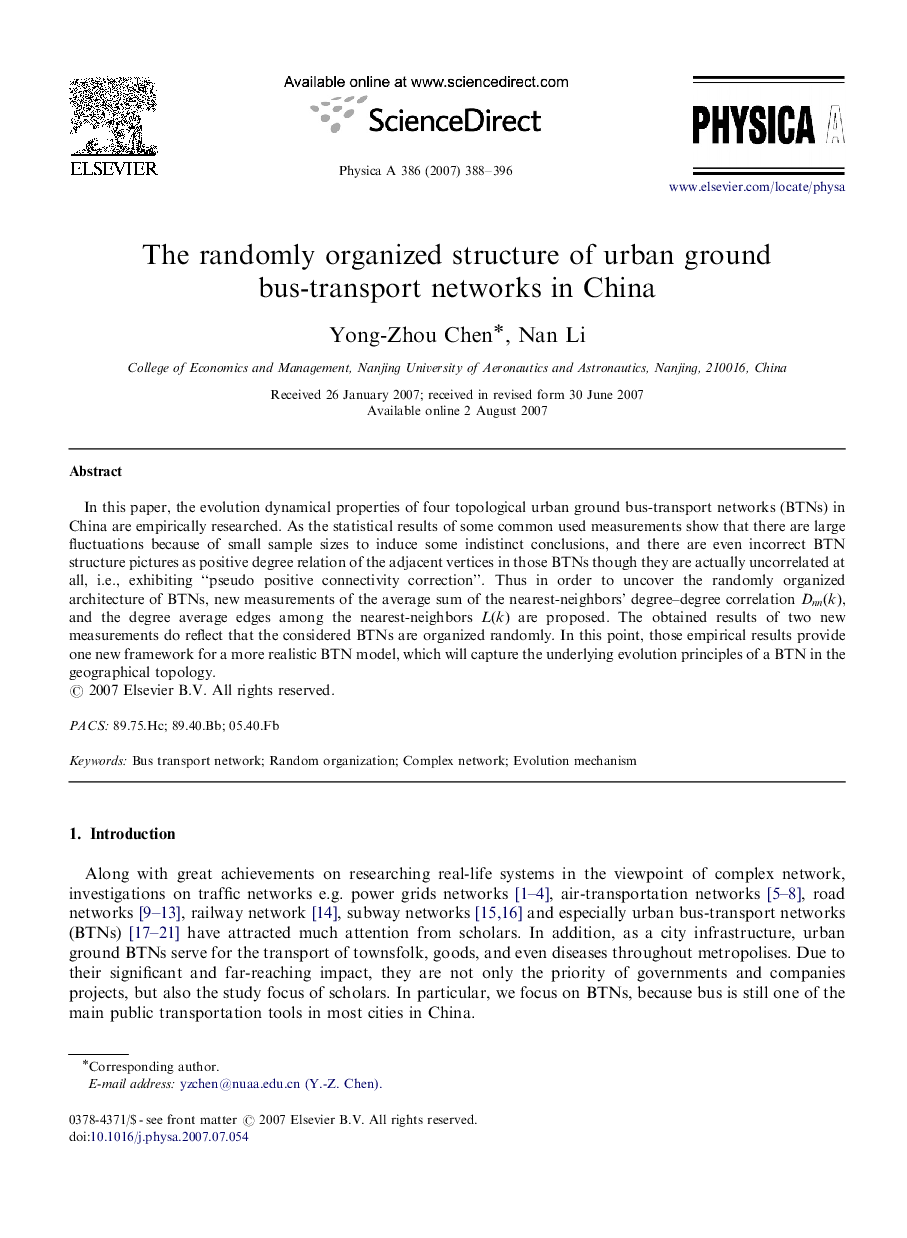| Article ID | Journal | Published Year | Pages | File Type |
|---|---|---|---|---|
| 979514 | Physica A: Statistical Mechanics and its Applications | 2007 | 9 Pages |
In this paper, the evolution dynamical properties of four topological urban ground bus-transport networks (BTNs) in China are empirically researched. As the statistical results of some common used measurements show that there are large fluctuations because of small sample sizes to induce some indistinct conclusions, and there are even incorrect BTN structure pictures as positive degree relation of the adjacent vertices in those BTNs though they are actually uncorrelated at all, i.e., exhibiting “pseudo positive connectivity correction”. Thus in order to uncover the randomly organized architecture of BTNs, new measurements of the average sum of the nearest-neighbors’ degree–degree correlation Dnn(k)Dnn(k), and the degree average edges among the nearest-neighbors L(k)L(k) are proposed. The obtained results of two new measurements do reflect that the considered BTNs are organized randomly. In this point, those empirical results provide one new framework for a more realistic BTN model, which will capture the underlying evolution principles of a BTN in the geographical topology.
